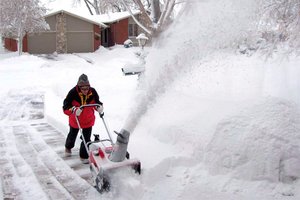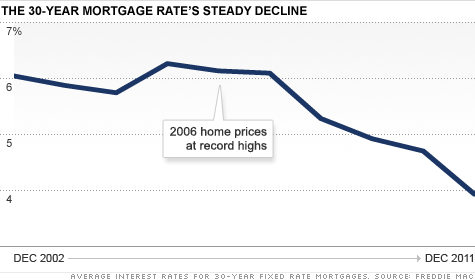After half a decade of withering sales and slumping prices, there are strong and diverse signs that the single-family housing market is poised for a rebound.
In some metropolitan areas, the market has bottomed, with both sales and prices on the rise and foreclosures on the decline.
This contrarian - and largely overlooked - thesis flies in the face of the persistent gloom that has nagged the industry since 2007, when the subprime crisis flared.
Industry analysts and players cite a number of reasons - some traditional (employment), others unique to the post-credit bubble era (foreclosures) Â - for the long-awaited sea change. An analysis of industry and government data also support the forecast.
"It has become increasingly apparent to us that the pieces for a housing rebound next year are beginning to fall into place," declared Barclays Capital analyst Stephen Kim in a recent note to investors.
Proponents admit that the nascent rebound could easily be derailed, but stress that after years of government efforts to support sales and prices as well as the volatile impact of foreclosures, the market has regained a measure of normalcy.
"With the exception of really hard-hit markets, the vast majority is ready to turn around," adds Jerry Howard, president and CEO of the National Association of Home Builders, NAHB. "The Washington, D.C., area is not only ripe for recovery, they need to start building units." The iShares Dow Jones US Home Construction Index Fund (NYSE Arca: itb), for example, is up some 38 percent, while the S&P 500 is up about 21 percent.
Nevertheless, skeptics overwhelmingly outnumber the optimists, given the false-starts of previous years, the economy's sub-par performance, a new wave of distressed properties and the capacity for the European debt crisis to spook business, consumers and investors.
"I think it's premature," says Richard Smith, CEO of Realogy, the nation's largest real estate company, whose brands include Century 21, Coldwell Banker and Sotheby's International. "We see little indications here and there. Transaction volume is improving. Prices are still under pressure. This isn't going to be one of those spiked robust recoveries." Smith is echoing the conventional industry calculus: that price increases follow sales growth amid consistently strengthening demand.
There's been little conventional, however, about this housing slump, which is one reason it's had so many false bottoms. Among its many firsts - housing starts fell through 1 million annual units, foreclosures topped 2 million in three consecutive years, and home prices declined on a national basis.
The catalysts to recovery are mostly the same: for potential buyers, residential rents have now risen enough to consider buying; existing-home inventory is the lowest in five years, while that of new homes is at a 40-year low; affordability is at a record high; delinquencies have peaked;consumer confidence is on the rise ; and job growth is accelerating. For investors, with a continuation of the gold rally in question, real estate is beginning to look like a viable inflation hedge alternative, while rising rents mean greater profits.
That thinking may help explain why the iShares Dow Jones US Home Construction Index Fund(NYSE Arca: itb), a broad barometer for the housing market, is up some 38 percent from the stock market's October bottom, while the S&P 500 is up about 21 percent.
Finally, there's the intangible fatigue with bad news, and a desire to end the negative feedback loop.
"We believe there is sizable housing demand that could be released into the market," says Lawrence Yun, chief economist of the National Association of Realtors, NAR. The NAR is forecasting existing home sales will rise 5 percent in both 2012 and 2013; prices will edge up 2 percent in each of those two years, then 4 percent in 2014.
The NAHB is forecasting a 5.1-percent increase in new home sales and a 10-percent increase for new home starts in 2012.
Jobs, Jobs, Jobs
A turnaround in the housing market will require continued improvement in the job market.
The economy has created jobs 13 months in a row for a total of almost 1.9 million. Weekly jobless claims have been routinely below the key level of 400,000, and the national jobless rate is down to 8.6 percent.
There are already signs in some markets that an improving employment picture is boosting housing demand and sale prices.
In cities such as Tampa, Fla., South Bend, Ind., Grand Rapids, Mich., Raleigh, N.C., Wichita, Kan., and Green Bay, Wis.., the median sales price of an existing single family home increased 1-2 percent in the third quarter, during which time the jobless rate and/or payrolls growth improved dramatically. Even in the Cape Coral-Fort Myers, Fla. metropolitan area - considered the epicenter of the foreclosure crisis a few years ago - prices were just 1.4 percent lower in the third quarter than the previous year.






